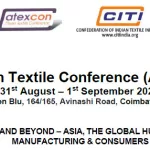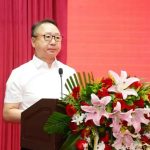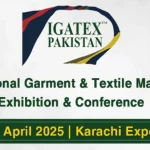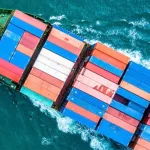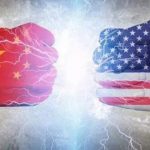 Sixth China Textile Industry “Belt and Road” Conference Commemorates a Decade of Progress, Forging Pathways for a Shared Global Future in Textiles
Sixth China Textile Industry “Belt and Road” Conference Commemorates a Decade of Progress, Forging Pathways for a Shared Global Future in Textiles
The 2023 Sixth China Textile Industry “Belt and Road” Conference convened in Keqiao, Shaoxing, Zhejiang, on November 3rd, arriving as scheduled on the significant occasion of the 10th anniversary of the joint construction of the “Belt and Road” initiative. This major gathering served as a pivotal platform to systematically review the substantial and fruitful outcomes of China’s textile industry’s deep integration into the global industrial and value chains over the past ten years.
Under the theme “Weaving the shared new future,” the conference successfully brought together more than 500 distinguished participants from nearly 30 countries and regions. This diverse assembly of senior government officials, leaders of textile and clothing industry organizations, embassy and consulate officials, and prominent entrepreneurs engaged in extensive communication, built consensus, and promoted deeper and more practical international cooperation within global textile organizations. The aim was to initiate a new chapter for the next decade of “Belt and Road” collaboration in the textile sector. The attendees provided fresh perspectives and injected new energy for high-quality joint development within the textile industry “Belt and Road” cooperation framework and for the sustainable advancement of the global textile industry.
Organized as part of the “2023 Textile and Apparel Excellent Supply Promotion and Upgrading” series of activities by the Ministry of Industry and Information Technology and the Ministry of Commerce, the conference was jointly hosted by the China Textile Industry Federation, the China Council for the Promotion of International Trade Textile Industry Branch, and the Shaoxing Keqiao District People’s Government.
The esteemed roster of domestic attendees included Mr. Sun Ruizhe, President of the International Textile Manufacturers Federation and President of the China Textile Industry Federation; Mr. Wang Tiankai, former president of the China Textile Alliance; and Mr. Xu Yingxin, Mr. Yang Zhaohua, and Mr. Zhang Yankai, vice presidents and former vice presidents of the China Textile Industry Federation, respectively. Leaders from various departments and affiliated public institutions of the China Textile Federation were also present. Government officials participating included Mr. Xu Jingchun, Inspector II of the Policy and Planning Department of the National Agency for International Development Cooperation, and Mr. Zong Ruilong, deputy director of the Consumer Goods Industry Department of the Ministry of Industry and Information Technology. Local government leaders from Shaoxing City and Keqiao District also played a prominent role, with Ms. Hu Min, deputy mayor of the People’s Government of Shaoxing City, and Mr. Chen Lihua, deputy secretary of the Keqiao District Party Committee, delivering significant addresses. Mr. Yuan Xiaowen, Member of the Standing Committee of Keqiao District, was also in attendance.

The international presence was equally distinguished, featuring His Excellency Khamis Chemal, Ambassador of Tanzania to China; Mr. Christian Schindler, Secretary General of the International Textile Manufacturers Federation; and Mr. Jin-teh Tan, Chairman of the ASEAN Textile Industry Federation. Representatives from textile and clothing merchant associations of ASEAN countries were also present. Senior government officials, leaders of textile and clothing merchant associations, officials from embassies and consulates in China, and industry professionals from nearly 30 countries and regions – including Cambodia, Laos, Myanmar, Thailand, Vietnam, Malaysia, Philippines, Singapore, Indonesia, Pakistan, Sri Lanka, Uzbekistan, Kyrgyzstan, Iran, Tunisia, Hungary, Greece, Bulgaria, Romania, Belgium, Egypt, Morocco, Tanzania, Benin, Nigeria, Colombia, and Peru – actively participated in the discussions. Further enriching the dialogue were representatives from member units of the China Textile International Capacity Cooperation Enterprise Alliance, leaders of local business associations in Keqiao, and representatives from textile and clothing enterprises. The conference proceedings were skillfully co-hosted by Mr. Liang Peng, Director of the Marketing Department of the China Textile Industry Federation, and Mr. Zhang Tao, deputy director of the Marketing Department of the China Textile and Apparel Industry Federation.

Mr. Xu Yingxin, Vice President of the China Textile Industry Federation and Executive Chairman of the China Textile International Capacity Cooperation Enterprise Alliance, highlighted in his speech that this year, marking the 10th anniversary of the “Belt and Road Initiative,” also signifies the 10th anniversary of the China Textile “Belt and Road” conference, bestowing upon it special significance and expectations. He proudly stated that over the past decade, China’s textile and apparel industry has solidified its position as one of China’s industries with the strongest international competitive advantages. As a leading and exemplary industry in “Belt and Road” industrial cooperation, it has fostered close economic and trade partnerships with countries along the route, yielding substantial results. Over the years, the China Textile and Apparel Industry Federation has leveraged its unique role as a bridge to build multi-bilateral textile industry international exchange forums and cooperation mechanisms. This has included organizing large-scale exhibitions across the entire industry chain both domestically and internationally, holding investment recommendation meetings for key countries, and leading national investment inspection teams to jointly build the “Belt and Road.” The Federation has also completed government-commissioned research projects and provided relevant public information products, effectively enhancing Chinese textile and apparel companies’ understanding of the investment environment in “Belt and Road” countries. Furthermore, with the support of the National Development and Reform Commission, the China Textile Federation took the lead in establishing the China Textile International Capacity Cooperation Enterprise Alliance, focused on serving the healthy and sustainable development of “Belt and Road” cooperation within China’s textile industry. In August of this year, the Federation released the “Action Plan for Building a Modern Textile Industrial System (2022-2035),” calling upon and guiding the entire industry to maintain a high level of participation in “Belt and Road” co-construction and cooperation over the next decade.
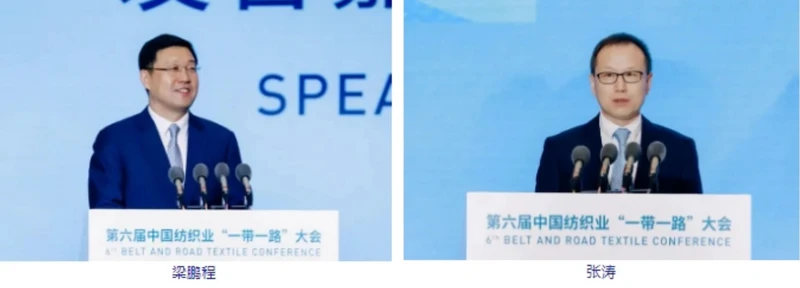
Shaoxing, recognized as an important node city at the hub of the “Belt and Road” and a world-renowned “textile capital,” possesses the country’s most complete textile industrial chain and marketing system. Ms. Hu Min, deputy mayor of Shaoxing, outlined the city’s commitment to building a world-class modern textile industry cluster by proactively embracing new trends in textile industry development. This includes promoting the digitalization, high-end development, and low-carbon transformation of the textile printing and dyeing industry. Guided by the joint construction of the “Belt and Road,” Shaoxing is actively strengthening digital trade, building international platforms, reinforcing production capacity cooperation, improving internal and external communication, and enhancing cultural exchanges, striving to become a crucial hub node in the textile field’s “dual circulation.” Looking ahead, Shaoxing will utilize this conference as an opportunity to deepen cooperation in areas such as digital empowerment, fashion design, and green and low carbon initiatives, jointly sharing new development opportunities and integrating into the overall “Belt and Road” framework. This collaborative approach aims to promote higher quality and level new developments in the textile industry through open collaboration, innovation collaboration, and smart collaboration.
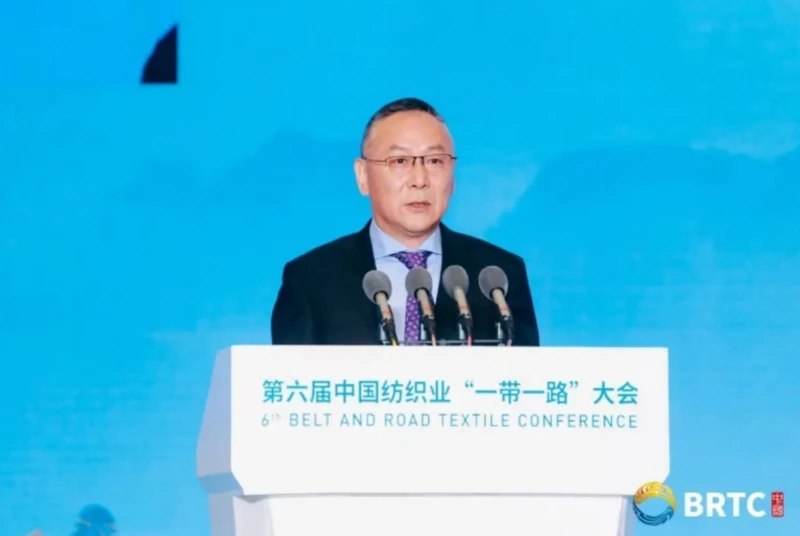
Mr. Chen Lihua, deputy secretary of the Keqiao District Party Committee, emphasized the textile industry’s status as Keqiao’s traditional advantageous industry, underpinned by a complete textile industrial chain and the world’s largest and most comprehensive textile distribution center, China Textile City. These assets provide Keqiao’s textile industry with significant advantages. In recent years, Keqiao has actively promoted the “Silk Road Keqiao・Bu Port Global Action Plan to deepen engagement with “Belt and Road” countries and build close cooperative relationships. This year, marking the 10th anniversary of the “Belt and Road” initiative, Keqiao District will use this conference as a new starting point to deeply integrate into the “Belt and Road” construction and comprehensively advance the “Sweet Potato Economy” Energy Enhancement and Upgrading No. 1 Opening Project. Concurrently, Keqiao will accelerate the transformation of its three major advantages – “market + industry + science and technology innovation” – and strive to build the “five major centers” in the modern textile field. These efforts aim to position Keqiao as a strategic hub and fulcrum of the “dual circulation” in the textile field and further promote the development of the global textile industry.
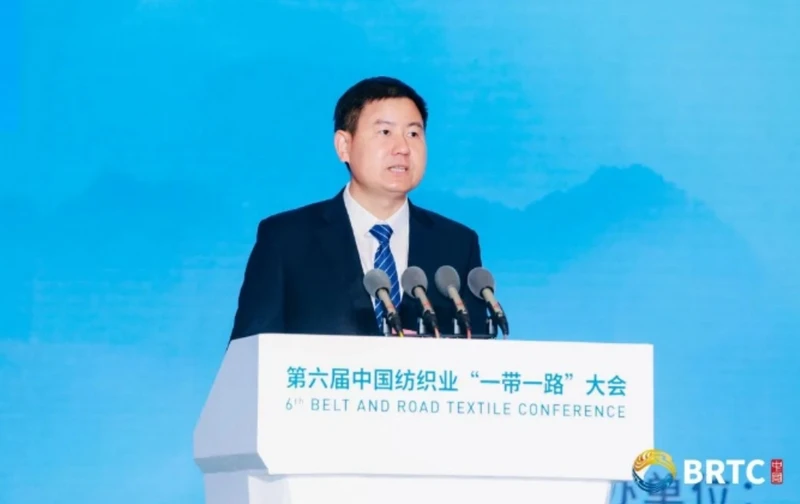
Over the past decade, China’s textile industry has played a constructive role in fostering win-win cooperation and shared prosperity within the global textile industry, guided by supportive policies. The conference specifically invited leaders and experts from government departments, including the Ministry of Industry and Information Technology and the National Agency for International Development Cooperation, to provide policy explanations, trend predictions, and policy guidance to support the high-quality development of the textile industry within the “Belt and Road” framework.
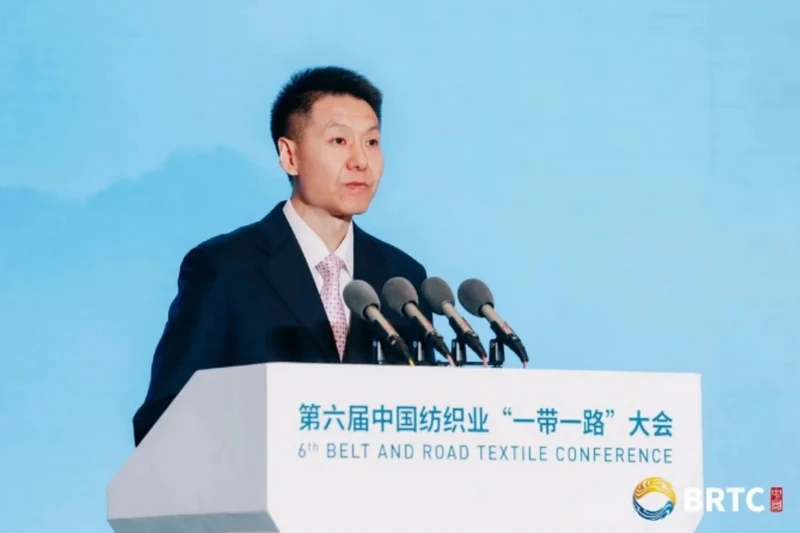
In a keynote speech titled “International Development Cooperation Helps High-Quality Joint Construction of the ‘Belt and Road’,” Mr. Xu Jingchun, second-level inspector of the Policy and Planning Department of the National Agency for International Development Cooperation, highlighted the agency’s active role since its establishment. The agency has coordinated resources to lead international cooperation in combating the epidemic, promote the implementation of major projects, support regional interconnection, consolidate public opinion bases, and create a favorable external environment, thereby contributing significantly to the high-quality joint construction of the “Belt and Road Initiative.” He outlined key areas of focus: leading international cooperation in the fight against the epidemic for a healthy Silk Road, focusing on interconnection to promote economic and trade integration, strengthening practical cooperation in people’s livelihood projects to enhance people-to-people connectivity, and promoting cooperation in new fields like the digital and green Silk Road.
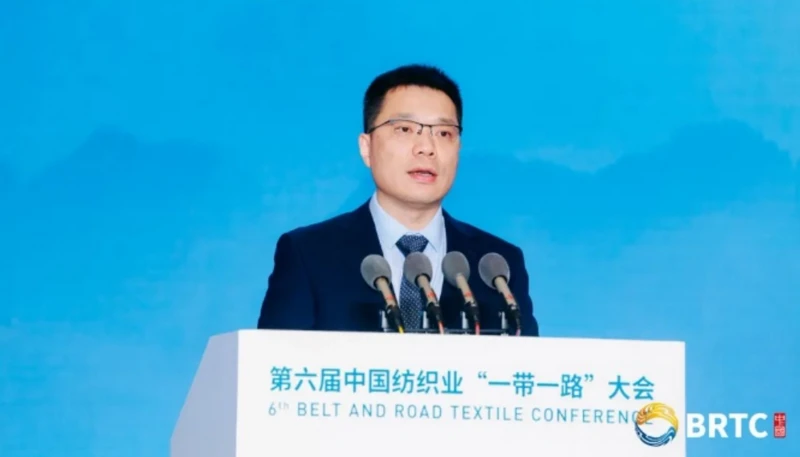
Mr. Zong Ruilong, deputy director of the Consumer Goods Industry Department of the Ministry of Industry and Information Technology, delivered a speech on “Direction and Path of Quality Improvement and Upgrading of the Textile Industry.” He emphasized four key areas for the textile industry’s development, aligning with national new industrialization efforts. Firstly, strengthening international exchanges and cooperation to achieve higher-level open cooperation in the textile industry chain and supply chain and foster new growth points in international economic and trade collaboration. Secondly, promoting green-cycle and low-carbon development through strengthened top-level planning, collaborative innovation, and increased application of green technologies. Thirdly, cultivating well-known textile brands using digital technology and focusing on building consumer brands, manufacturing brands, and regional brands within industrial clusters. Fourthly, expanding the space for industrial development by advancing functional chemical fibers, expanding industrial textiles applications, and enhancing the value of natural fiber products. He affirmed that over the past ten years, the textile industry has been a model for “Belt and Road” industrial cooperation, contributing to livelihoods, employment, and economic development globally.
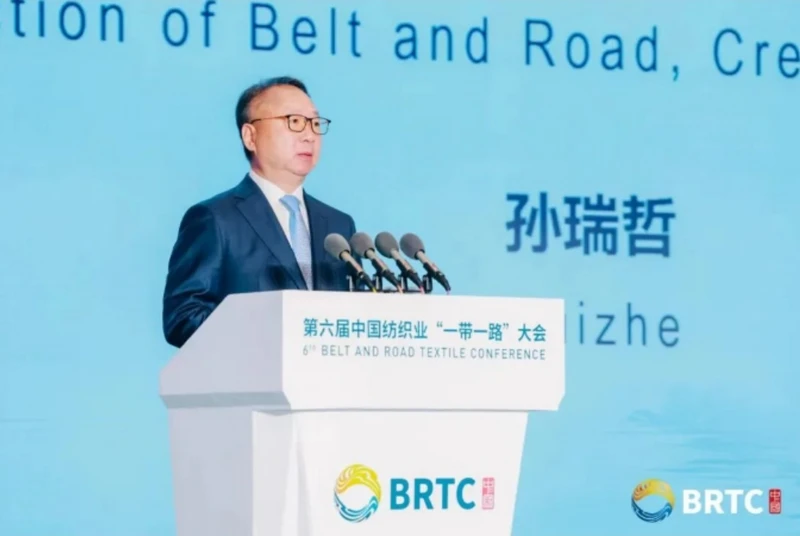
Mr. Sun Ruizhe, President of the International Textile Manufacturers Federation and President of the China Textile and Apparel Industry Federation, delivered a speech titled “High-quality Co-construction ‘One Belt, One Road‘ Creating the Development of the Global Textile Industry.” He discussed how to jointly build the textile industry “Belt and Road” at a high quality in the new stage and promote the sustainable development and prosperity of the global textile industry, sharing insights on three aspects. First, he highlighted China’s textile development achievements and global contributions, noting the multi-dimensional and leapfrog development achieved through integration into “Belt and Road” construction. He emphasized China’s consolidating manufacturing advantages, improving technological innovation, emerging fashion leadership, and increasingly complete green system. He stated that China’s textile development brings global opportunities through products “going global” to meet demand, production capacity “going global” to improve the global system, and capital and brands “going out” to achieve global value. Second, he addressed the deepening global textile adjustments and the real pressures facing development. He noted that under the changes of the past century, the global textile industry has entered a period of transformation, including shifts in industrial structure due to geopolitics, changes in industrial form driven by the digital economy, and changes in industrial value under the dual carbon goal. He acknowledged the real pressures facing the industry, including expectations of a slowdown in world economic growth and insufficient terminal market demand. Despite the challenging environment, China’s textile industry has demonstrated resilience under pressure. Third, he discussed integrating into the world’s modernization journey and jointly creating the splendid prosperity of the “Belt and Road.” He mentioned the “Action Outline for the Modern Textile Industrial System (2022-2035)” formulated and released by the China Textile and Apparel Industry Federation, which provides a framework for building a modern textile industrial system in China. He suggested that China’s innovative practices can offer reference and opportunities for other countries and regions to develop their textile industries. Focusing on high-quality cooperation in the textile industry along the “Belt and Road,” Mr. Sun Ruizhe proposed three suggestions: demonstrating fair value in development to promote shared growth, demonstrating the value of openness in competition and cooperation to promote the implementation of global security initiatives, and demonstrating mutual learning and integration values to promote the implementation of the Global Civilization Initiative.
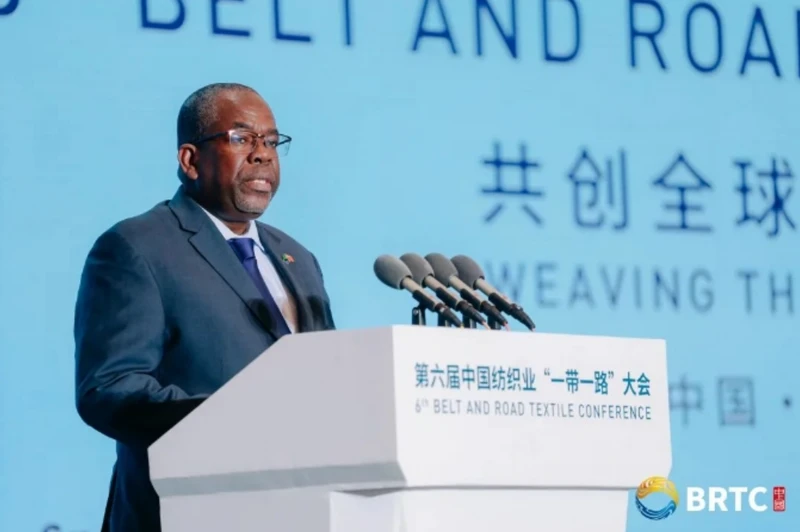
Over the past ten years, with the goal of high standards, sustainability, and benefiting people’s livelihood, the “Belt and Road” has become a path and opportunity for cooperation in the global textile industry. During the conference’s sharing session, representatives from countries including Tanzania, Pakistan, and Benin presented overviews of their regional industrial development, cooperation potential, and development opportunities. Representatives from Chinese enterprises like Wuxi Yimian and SUMEC Textile shared their experiences in international operations and investing in overseas facilities, as well as the challenges they have encountered.
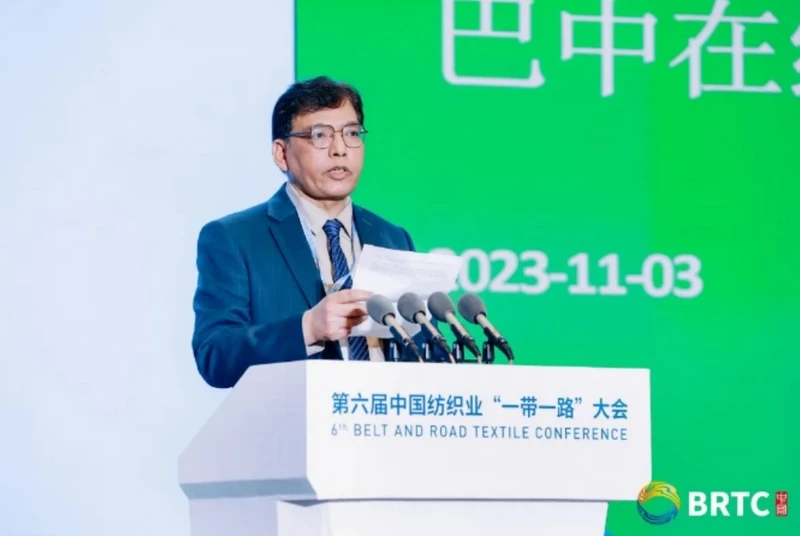
In a sharing session titled “The Potential of Trade and Investment Cooperation between China and Tanzania’s Textile and Apparel Industry,” His Excellency Khamis Chemal, Tanzania’s Ambassador to China, emphasized the broad value chain of the textile and clothing sector and how opportunities in this sector grow with population and income. He highlighted the global diversity and continuous innovation in the textile industry, which can promote global development, creating both wealth and employment. Advantages of investing in Tanzania include the comprehensive strategic partnership between China and Tanzania, which involves cooperation in many fields, and Tanzania’s position as one of the most populous countries in Africa, offering the potential to leverage the young population for developing textile and clothing fashion design and creative industries.
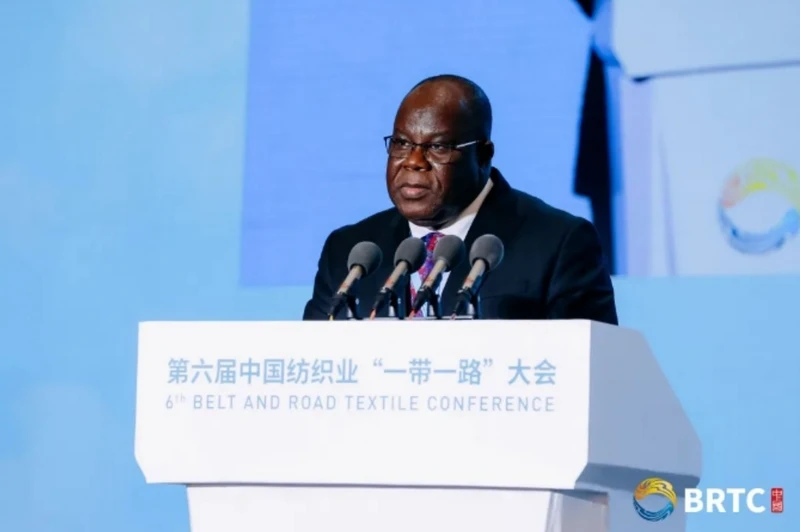
Mr. Hou Jian, Consul General of the Consulate General of Pakistan in Shanghai, provided insights into “Pakistan-China textile industry cooperation: current situation and future.” He noted that the textile and apparel industry is Pakistan’s largest industry and a significant contributor to exports and job creation. China is Pakistan’s largest trading partner, and the China-Pakistan Economic Corridor project has created numerous opportunities for economic growth and development between the two countries. Pakistan’s investment advantages include a market size of 220 million people, a competitive labor force, a favorable business environment, duty-free access and investment protection policies between China and the EU, and a strategic location serving as an important gateway to the Middle East, South Asia, and Europe.
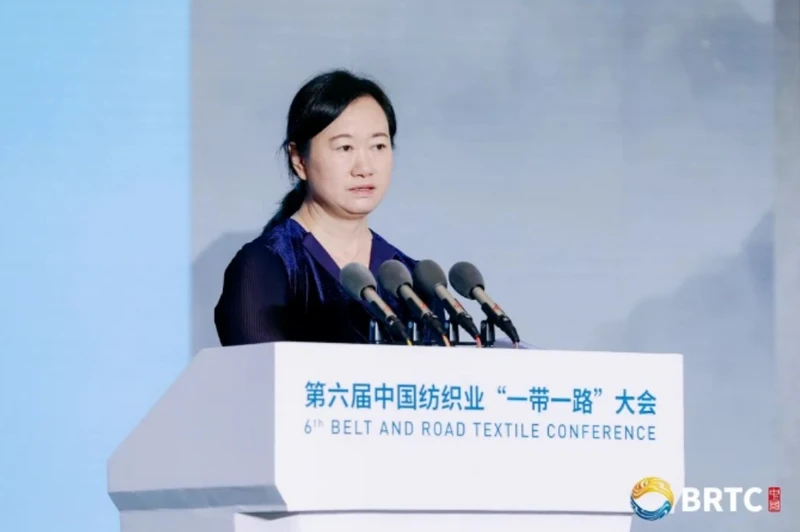
Mr. Luc Ayba, Minister Counselor of the Embassy of Benin in China, discussed the development and cooperation of Benin’s textile industry under the “Belt and Road Initiative.” He provided detailed information on the development advantages and investment environment of the Grugigbe Textile Park, noting that Chinese companies investing in Benin benefit from tax-free export preferential policies to Europe and the United States. He attributed the rapid development of Benin’s textile industry to the active integration of the Chinese textile industry into the “Belt and Road” initiative. Cotton is a crucial cash crop in Benin, and the country is increasing machine cotton planting to achieve sustainable development. In the future, Benin aims to further enhance its textile and cotton industry’s visibility, resilience, and competitiveness to create higher industrial chain value for African agriculture.
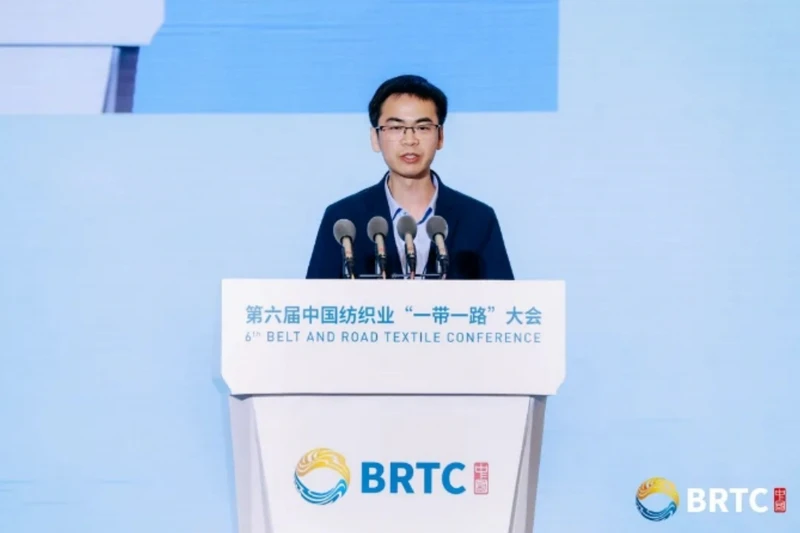
Mr. Zhou Yepei, Chairman of Wuxi Yimian Textile Group Co., Ltd., shared his company’s journey in a presentation titled “A new journey of a century, set sail again—— Overseas factory building, conspiracy Development.” He explained that Wuxi Yimian has consistently pursued a development strategy focused on intelligent production, refined management, product characteristics, and global trade, forging a path of high-quality development. He acknowledged that challenges and opportunities coexist in the process of overseas entrepreneurship. As a “Belt and Road” production capacity cooperation “demonstration enterprise” in the textile industry, Wuxi Yimian’s Ethiopian factory’s success is attributed to strengthening green and sustainable development, adhering to professionalism and a high-end positioning, and implementing a people-oriented talent strategy that values employees and fosters a harmonious enterprise. Moving forward, Wuxi Yimian remains committed to its textile origins, focusing on textile development and resolutely pursuing an international layout, aiming to establish the Ethiopian factory as a benchmark textile enterprise in both China and Africa.
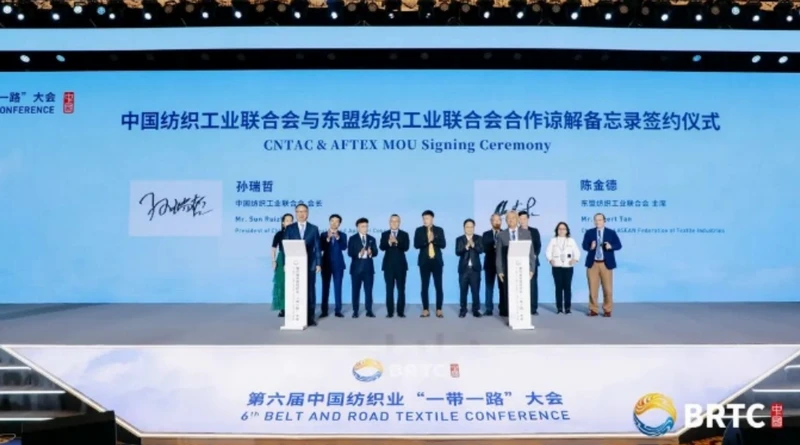
Mr. Huang Zhengang, deputy general manager of SUMEC Textile Co., Ltd., shared insights under the theme “Adhering to the perspective of globalization, deeply cultivating international operations, and striving to create an industrial chain and production circle that integrates common ideas.” He noted that over the past decade, SUMEC has strengthened its presence in “Belt and Road” countries and regions across various sectors, including commodities, engineering construction, power machinery, shipbuilding, international shipping, and textiles and clothing. Currently, SUMEC’s trade volume with countries jointly building the “Belt and Road” accounts for 47% of the company’s total import and export trade. In the future, SUMEC will continue to uphold the development concept of openness, cooperation, mutual benefit, and win-win outcomes, increasing market development efforts in these countries and broadening the depth of international production capacity cooperation to further contribute to the textile industry’s “Belt and Road” construction.
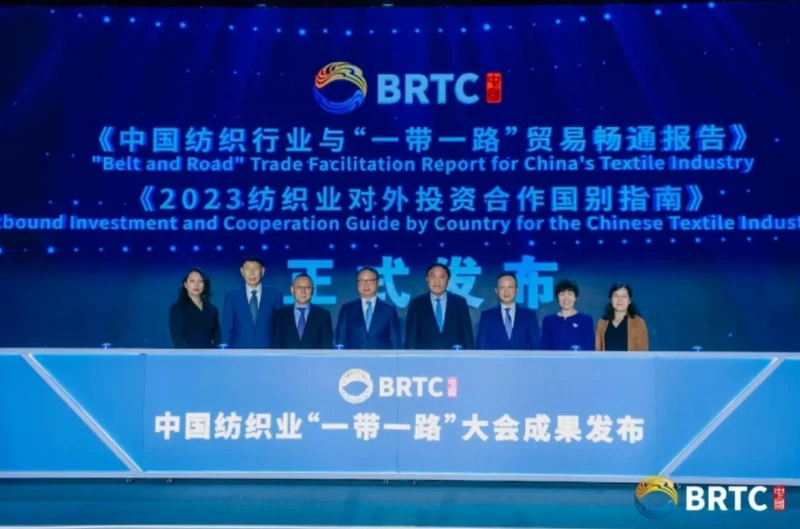
In a significant step to enhance exchanges between the textile industries of China and Southeast Asian countries, representatives from the International Textile Manufacturers Federation and the ASEAN Textile Industry Federation signed a memorandum of understanding on cooperation during the conference, witnessed by representatives of textile and garment merchant associations from China and ASEAN countries.
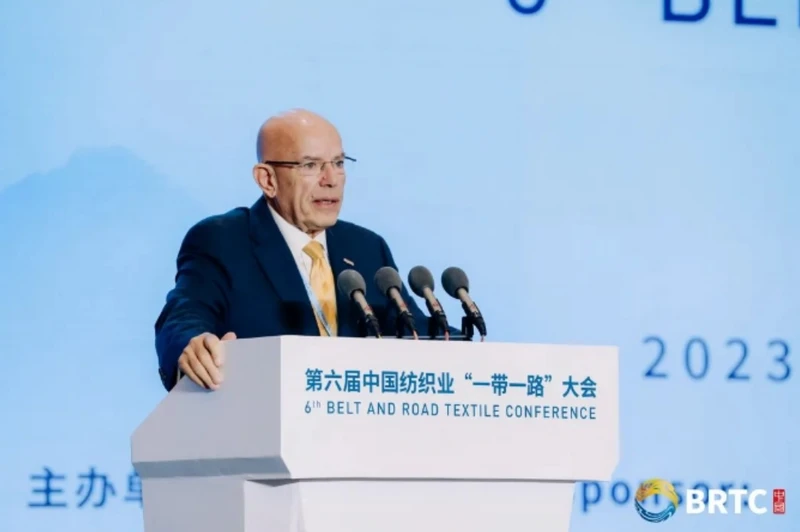
The conference also marked the joint release of two key documents: the “China Textile Industry and the ‘Belt and Road’ Trade Smoothness Report” and the “2023 Textile Industry Foreign Investment and Cooperation Country Specific Guidelines.” Additionally, the “Textile Going Global” mini program was enhanced with a newly launched “Free Trade Agreement Tax Rate Inquiry” function, providing valuable resources for enterprises.
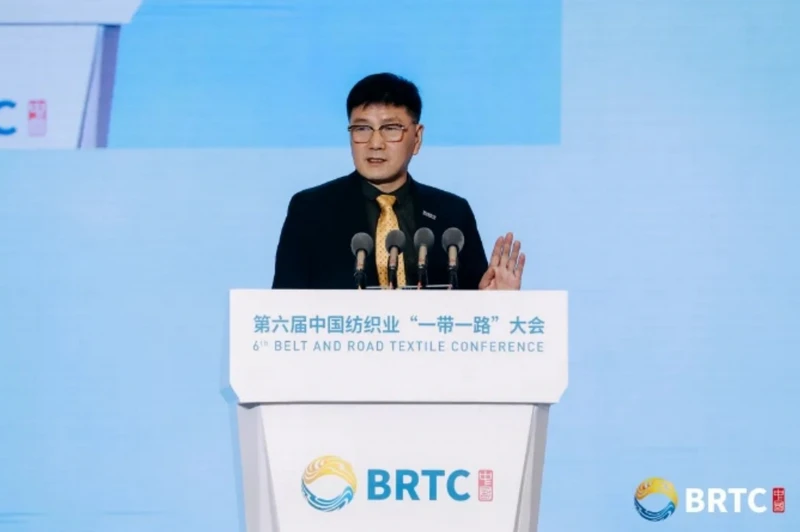
Standing at the starting point of a new decade and looking towards a new future for global textile industry cooperation, representatives from business associations in Egypt, Cambodia, Indonesia, and Morocco shared their perspectives on the theme of “New Future, New Opportunities.” They presented information on their local business environments, industrial investment landscapes, and preferential policies and measures, expressing their readiness to provide high-quality and efficient services to facilitate global textile enterprises’ shared success and win-win outcomes.
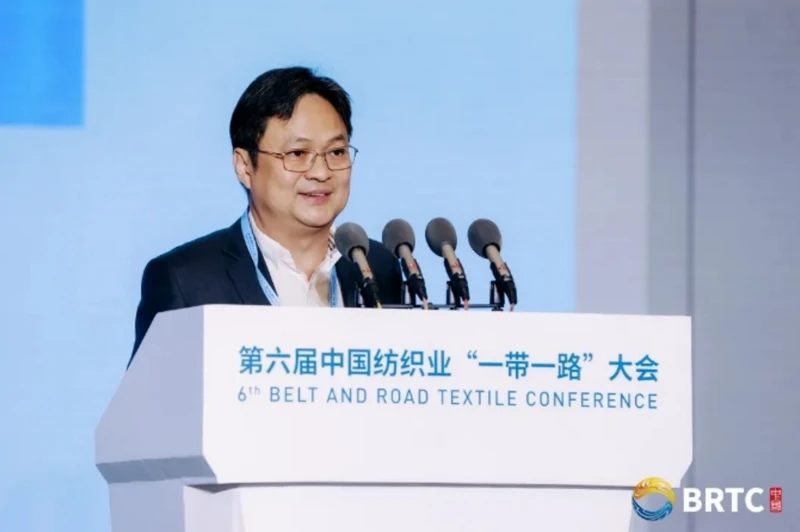
Mr. Mohamed Qasim, President of the Egyptian Exporters Association, shared insights on “co-construction ‘Belt and Road Initiative and global value chain reshaping: China and Egypt Opportunities for cooperation in the textile industry.” He highlighted the long history of economic and trade exchanges and friendly relations between China and Egypt, noting the deepening cooperation and increasing investment in the textile industry in recent years. He pointed out that as the textile industry develops to a certain level, relocation to countries with lower costs is a natural progression, and both China and Egypt, as major players in the textile industry, offer favorable conditions for the transfer of China’s textile industry. He particularly emphasized Egypt’s convenient market access and the preferential market access enjoyed by countries and regions such as the European Union and the United Kingdom, as well as other investment advantages.
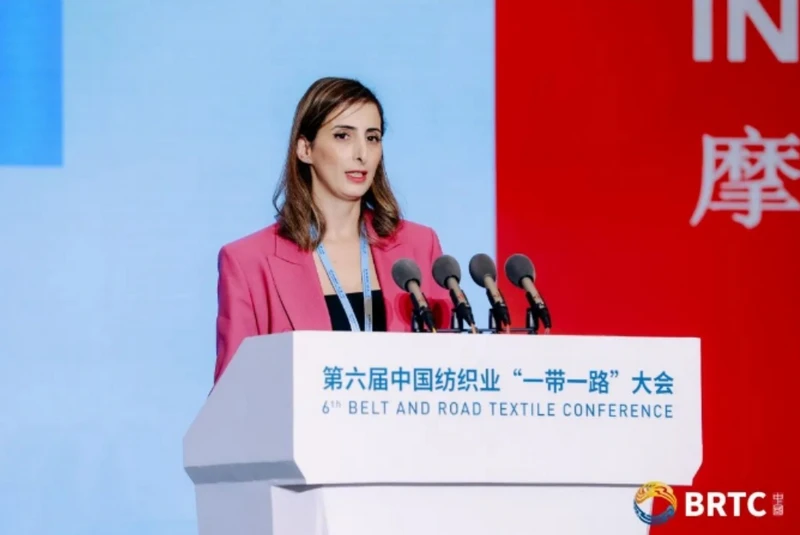
Mr. He Enjia, President of the China Textile Association of Cambodia and Vice President of the China Textile, Clothing, Shoemaking and Bags Association of Cambodia, shared the “Cambodia Textile and Clothing: The latest industrial developments and prospects for international cooperation.” He highlighted that the textile industry is the largest industry in Cambodia, employing nearly a quarter of the population. China is a major importer of Cambodian textiles, accounting for approximately 60% of the trade volume, while woven clothing is primarily exported to the United States, the European Union, and the United Kingdom. He also outlined Cambodia’s textile industry development strategy, which includes strengthening human resources and increasing productivity, improving working conditions and employee welfare, promoting domestic and foreign investment in high-value-added products, and attracting investment in front-end industries.
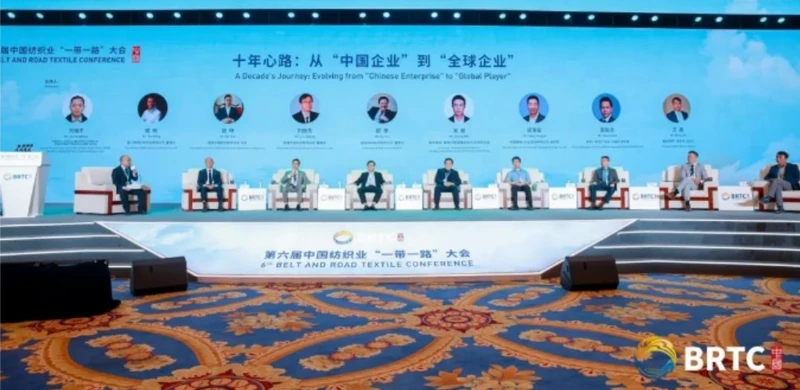
Mr. Jamie Kativa Sastratmaja, President of the Indonesian Textile Association, presented on “Indonesia’s textile industry development potential,” focusing on the industry’s development, investment and business environment, and export trade status. He stated that Indonesia is becoming a highly attractive investment option amidst the industrial shift in the global apparel manufacturing industry, with the majority of textile and clothing factories located on the island of Java. Recognizing the industry’s focus on green and circular development, he expressed hope that the conference would pave a path towards sustainable development and attract further investment to support the high-quality growth of Indonesia’s textile industry.
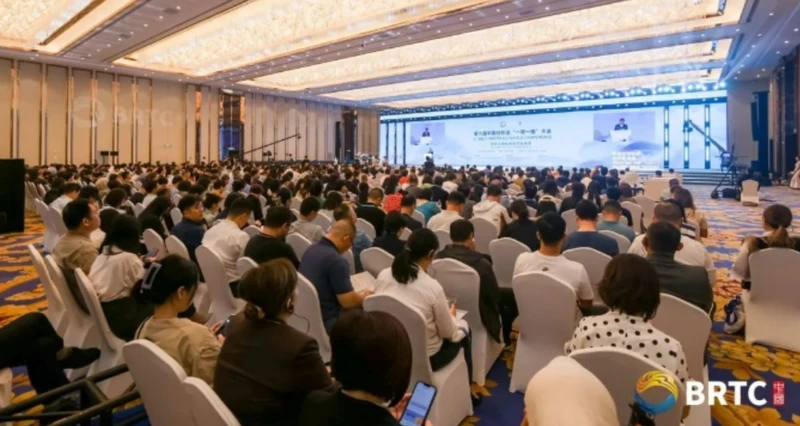
Ms. Hande Saidi, director of the Textile and Leather Department of the Moroccan Olympic Investment and Development Authority, discussed the “Moroccan Textile Industry: Building a Sustainable Future Together.” She shared insights into the development and business environment of the textile and clothing industry in Morocco, describing it as a world-level “pivot” for sustainable investment and trade with immense development potential. She highlighted Morocco’s political stability, sustained economic development, robust integrated industrial chain, efficient execution, fast delivery cycles, and a highly skilled and cost-effective labor force as key advantages.

Over the past decade, Chinese textile enterprises have actively engaged in the joint construction of the “Belt and Road Initiative,” continuously integrating into the global textile industry system and achieving a growing level of high-quality development. During a dedicated special dialogue session, corporate guests from various regions shared their experiences on the topic “Ten Years of Thoughts: From ‘Chinese Enterprises’ to ‘Global Enterprises’.” The session was presided over by Mr. Liu Minzhong, Deputy Director of the International Trade Office of the China Textile Industry Federation and Secretary-General of the China Textile International Capacity Cooperative Enterprise Alliance.
Four distinguished guests – Mr. Yao Ming, Chairman of Xiamen Yao Ming Ribbon Jewelry Co., Ltd.; Mr. Liu Jidong, Chairman of Nantong Dongrun Industrial Co., Ltd.; Mr. Liang Yingjun, Vice President of Litai Lion Dance (Cang) Holdings Co., Ltd.; and Mr. Zhang Wei, Assistant to the Chairman and Director of Strategy and Marketing Department of Lutai Group – presented on the current development of their textile businesses in India, Myanmar, Vietnam, Uzbekistan, and Cambodia. They expressed their hope that more investors would focus on “Belt and Road” countries and that outstanding domestic enterprises would establish strategic cooperative relationships with local textile enterprises in these countries to comprehensively enhance and improve the local industrial supply chains and promote the high-quality development of the local textile industry.
Representatives such as Mr. Shi Kun, President of the Textile and Clothing Branch of the Myanmar Chinese Business Chamber, Mr. Ou Kui, Chairman of H&K Investment Co., Ltd., Mr. Wu Junjie, general manager of Upgrade to “non-integrated industrial park,” and Mr. Wang San, partner of Deyi Firm, discussed and exchanged views on topics related to Chinese enterprises “going global” and investing in overseas facilities. Drawing on the development situations of the textile and apparel industry in Southeast Asia, West Africa, and Central America, they focused on strategic positioning, employment training, and foreign trade exports. There was a consensus that in the future, they should fully utilize their respective advantages and resources to support the success of Chinese textile enterprises going global.
The conference concluded with a forward-looking perspective, acknowledging the continuation of history, the choices of reality, and the traction of the future. The enduring imagery of camel bells and sails on the “Belt and Road” throughout history serves as a testament to the textile industry as a community with a shared future and cooperation as the correct path forward in the world. The textile and clothing industry is poised to “thread the needle and lead the way,” adding value and excellence. This conference has successfully united all parties to embark on a new chapter in the high-quality development of the textile industry’s joint construction of the “Belt and Road Initiative” from the starting point of the next ten years.
About the China Textile Industry Federation:
The China Textile Industry Federation is a national, non-profit organization representing the textile and apparel industry in China. It is dedicated to promoting the sustainable development of the industry through technological innovation, brand building, and international cooperation.
About the China Council for the Promotion of International Trade Textile Industry Branch:
The China Council for the Promotion of International Trade Textile Industry Branch is a specialized body under the China Council for the Promotion of International Trade. It focuses on facilitating international trade and economic cooperation in the textile industry, providing services such as organizing exhibitions, conducting market research, and promoting business exchanges.
About the Shaoxing Keqiao District People’s Government:
Keqiao District in Shaoxing City, Zhejiang Province, is renowned as a global textile hub. The local government is committed to developing the textile industry through technological upgrading, industrial clustering, and international collaboration, aiming to build a world-class textile industry base.
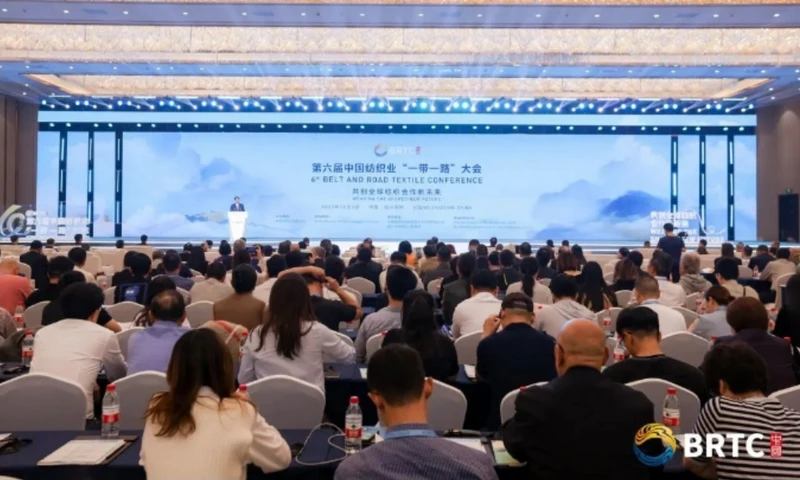 Sixth China Textile Industry “Belt and Road” Conference Commemorates a Decade of Progress, Forging Pathways for a Shared Global Future in Textiles
Sixth China Textile Industry “Belt and Road” Conference Commemorates a Decade of Progress, Forging Pathways for a Shared Global Future in Textiles